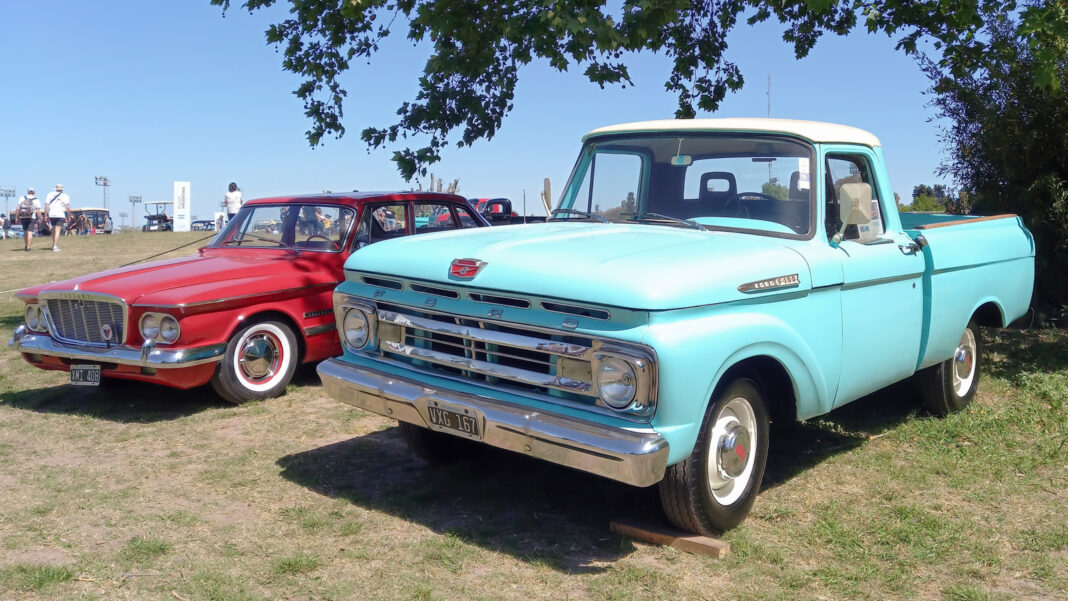Ford Unibody Truck: A Failed Experiment in Innovation
In the realm of automotive history, Ford stands tall with its iconic blue oval badge and groundbreaking moving assembly line. Known for its durable, reliable, and performance-driven vehicles, Ford has had its fair share of successes and failures. One such experiment was the introduction of the unibody design in its truck lineup back in the 1960s.
The Story So Far
Back in 1961, Ford unveiled its two-door styleside F-100 and F-250 trucks with a revolutionary unibody design. The concept was simple yet innovative—by creating a single unit for the chassis and body, Ford aimed to offer a more rigid, lightweight vehicle that promised superior handling and better fuel economy. However, despite the initial excitement, the unibody trucks failed to make a mark in the market and were discontinued after just two years in 1963.
What caused Ford’s first unibody design to fail?
While the unibody design had its theoretical advantages, it was plagued by several issues that led to its downfall. One major drawback was the lack of structural rigidity in real-world use. The promise of a rigid chassis fell short when the trucks were loaded, leading to body flex and instability. Additionally, door jamming became a common issue when the cargo bed was heavily loaded, making the trucks impractical for everyday use.
Ford didn’t give up on its unibody concept after the 1960s
Despite the setback in the 1960s, Ford continued to explore and improve the unibody technology for its vehicles in the following decades. Models like the Ford Escape in 2001 and the Ford Transit van in 2015 showcased the benefits of unibody construction, offering fuel efficiency and enhanced driving experiences. The 2015 Ford F-150, with its aluminum unibody architecture, further solidified Ford’s commitment to innovation.
In late 2021, Ford reintroduced the "Maverick" nameplate as a four-door compact pickup truck with a modern unibody design. Featuring advanced technologies like an independent front suspension and hybrid powertrain, the 2022 Maverick proved that Ford’s earlier experiment was not in vain—it laid the foundation for future innovations in automotive engineering.
Conclusion
Ford’s foray into unibody construction in the 1960s may have been short-lived, but it paved the way for significant advancements in the decades to come. The lessons learned from the failed experiment shaped Ford’s approach to innovation, leading to the development of groundbreaking vehicles that continue to push the boundaries of automotive technology.
Frequently Asked Questions
- What was Ford’s first unibody design?
Ford introduced its first unibody design for the F-100 and F-250 trucks in 1961. - Why did Ford’s unibody trucks fail in the market?
Issues like lack of structural rigidity, door jamming, and high repair costs led to the failure of Ford’s unibody trucks. - How did Ford improve its unibody technology over the years?
Ford continued to refine its unibody technology with models like the Ford Escape, Ford Transit van, and the 2015 Ford F-150. - What were the key features of the 2022 Ford Maverick?
The 2022 Ford Maverick featured a modern unibody design, hybrid powertrain, and advanced suspension for enhanced performance. - Did Ford’s earlier unibody experiment influence future innovations?
Yes, Ford’s first unibody experiment laid the foundation for future innovations in automotive engineering. - Which Ford models showcased the benefits of unibody construction?
The Ford Escape, Ford Transit van, and the 2015 Ford F-150 highlighted the advantages of unibody technology. - How did Ford address the issues faced with its first unibody trucks?
Ford addressed issues like structural rigidity and door jamming by refining the unibody technology in later models. - What impact did the unibody concept have on Ford’s overall vehicle lineup?
The unibody concept influenced Ford’s approach to vehicle design, leading to more efficient and performance-driven models. - Why did Ford revive the "Maverick" nameplate for its compact pickup truck?
Ford revived the "Maverick" nameplate to introduce a modern compact pickup truck with innovative features and technologies. - How has Ford’s unibody technology evolved over time?
Ford’s unibody technology has evolved to offer better fuel efficiency, handling, and comfort in its vehicles.Tags: Ford, Unibody Design, Maverick, Pickup Trucks, Automotive Engineering, Innovation

